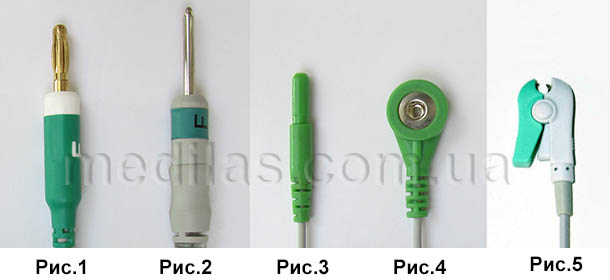When choosing an ECG cable or SpO2 sensor, first of all, you need to know the brand and type of the device, the type of connection connector, you may also need a serial number and year of manufacture. It must be remembered that devices of the same type, depending on the year of manufacture and serial number, may have different connectors for connecting SpO2 sensors and ECG cables. This is especially true for such widespread manufacturers in Ukraine as Yutas and Mindray. It is also necessary to take into account that sometimes the equipment of the ubiquitous Chinese manufacturer with tags of famous brands comes across in use. Therefore, one of the best options for choosing the appropriate sensor or cable is to provide a complete sample of the sensor or cable, even if it is defective.
The lists of compatible brands and models are far from complete, because more and more equipment is being developed and produced in the world.
If the required cable or sensor is not in the list, it is usually possible to order it by contacting us.
Choice of ECG cable for electrocardiographs and resuscitation bedside monitors.
Types of ECG cable leads contacts

Fig.1 4 mm with "banana" spring
Fig.2 DIN 3.0 3 mm without spring
Fig. .3 DIN 1.5 female
Fig.4 latch "button"
Fig.5 clamp
The contacts of the types in Fig.1 and Fig.2 have cables used with cardiographs. should fit the corresponding electrodes: chest (pegs) and limb (clothes pegs) Contacts of the types in Fig. 4 and Fig. 5 have cables used with resuscitation monitors, as well as with cardiographs as part of complexes for conducting stress tests (stress systems) They are attached to sticky disposable electrodes.
DIN 1.5 female connectors (Fig.3) have some Holter monitor cables as well as some prefabricated ECG cables.
When choosing ECG cables, please note that Ukraine has adopted the European color marking (IEC).The designation of the American marking is AHA.
Note that cables for resuscitation patient monitors come in 3-lead and 5-lead versions.
Sometimes it is also important to know if a cardiograph with a selectable cable will be used while using a defibrillator.
If you did not find the brand of your device or its type in our list, or if you have any questions, we will be happy to advise.
And, finally,
recommendations for the use of SpO2 sensors (blood oxygen saturation sensors), ECG cables, temperature sensors and other accessories
- Cable insulation can become hard and brittle when exposed to ultraviolet radiation (during treatment with germicidal lamps), as well as when treated with some disinfectants. To prevent ultraviolet radiation, we recommend covering the equipment with cables and sensors with diapers or sheets. If the cable stiffness has increased only near the electrodes, we recommend changing the disinfectant.
- Liquids must be avoided to enter the SpO2 probes (sensors). If this does happen, you should disconnect the sensor from the monitor or pulse oximeter as soon as possible and remove the liquid with a dry paper towel. Failure in such cases usually occurs not immediately, but after some time, due to the duration of the corrosion process.
- The readings of devices with SpO2 sensors can have a strong error if the sensor is worn on a finger smeared with brilliant green, iodine, and other coloring preparations. Even the painted nails of the patient can influence the indications. But it is especially bad if the dye also has time to be absorbed into the filter material. For this, the foreign manufacturer recommends that SpO2 sensors be regularly inspected and immediately discarded with signs of staining.
03 September 2014, Odessa, UKRAINE




